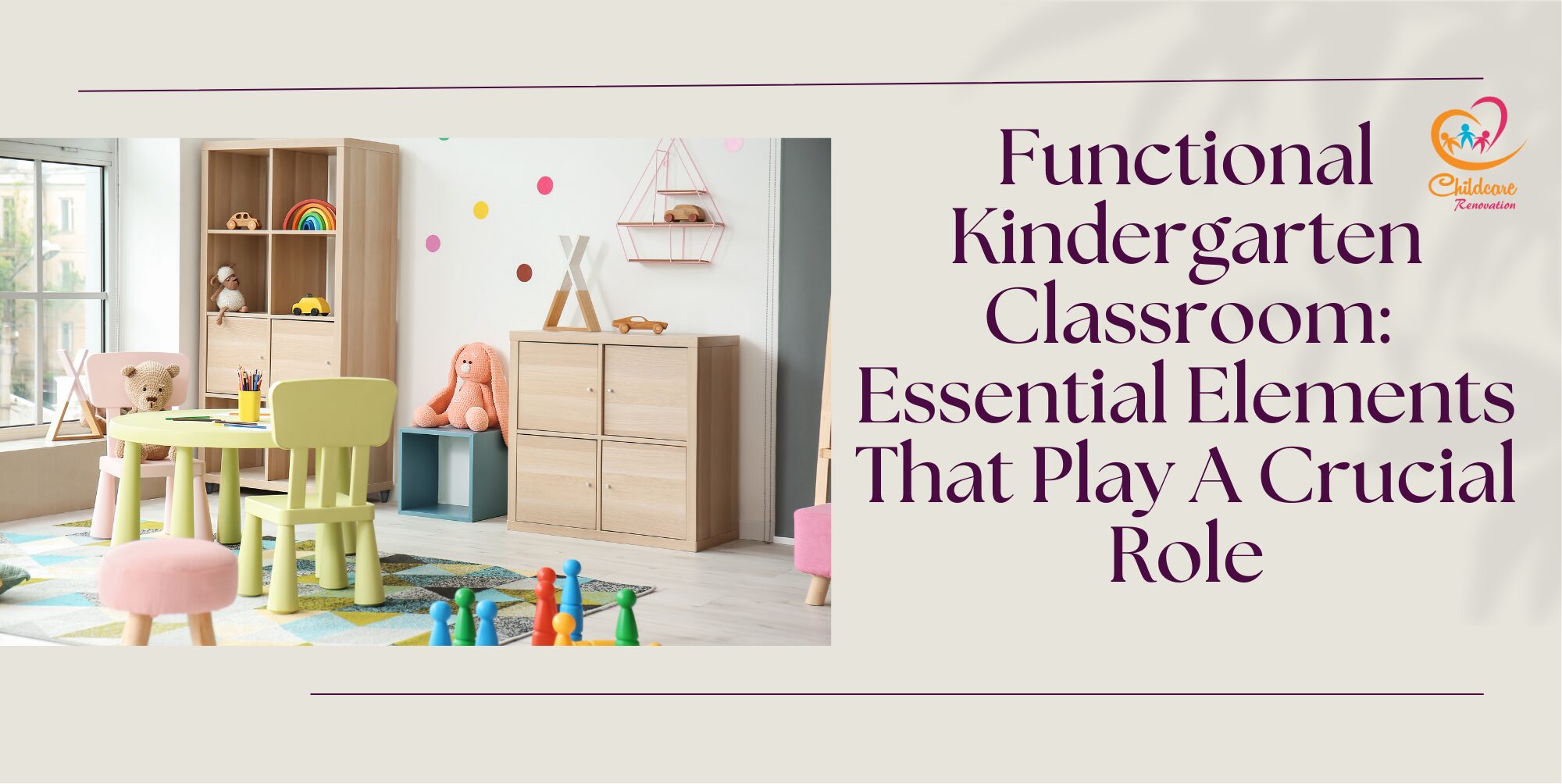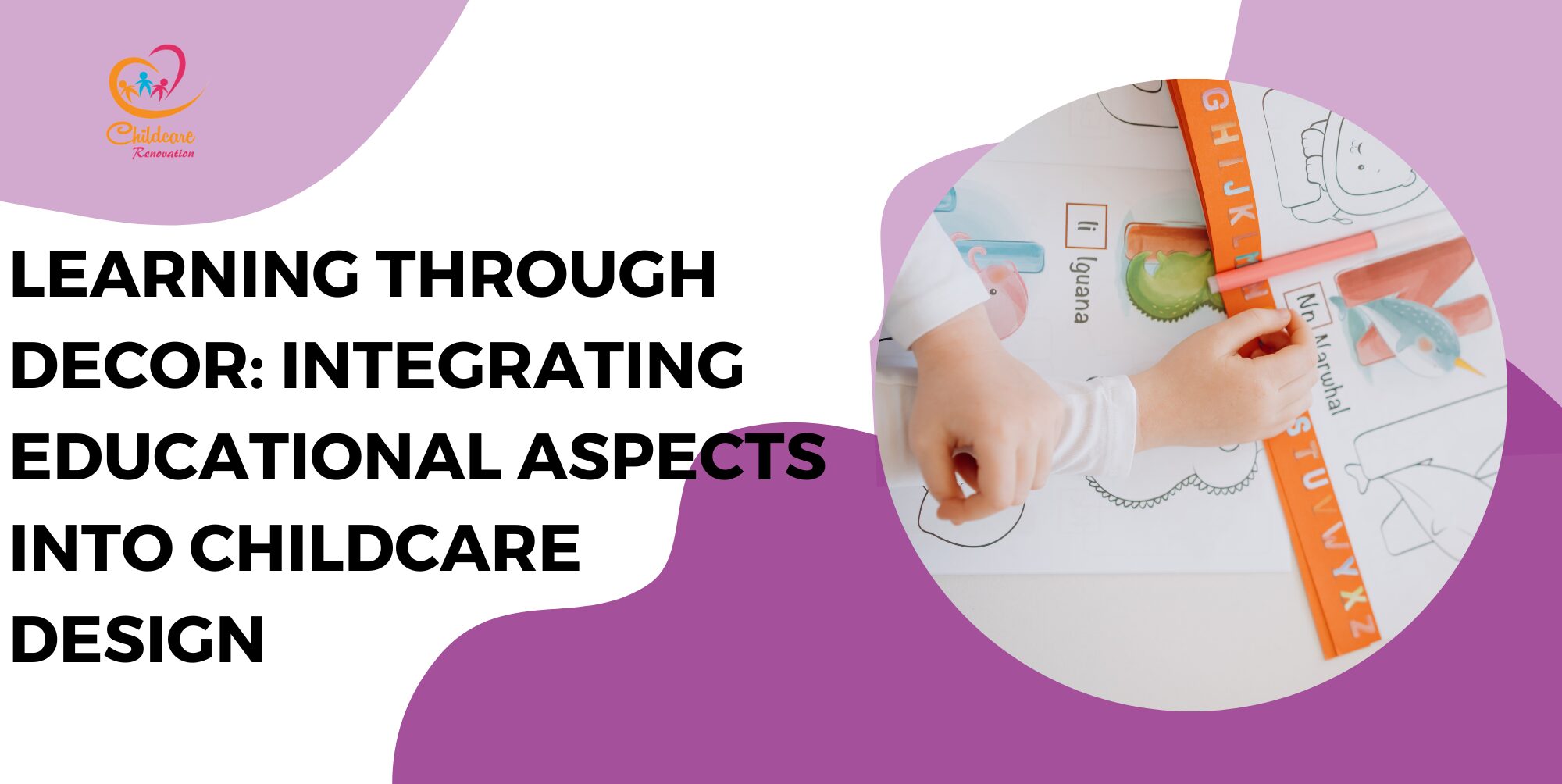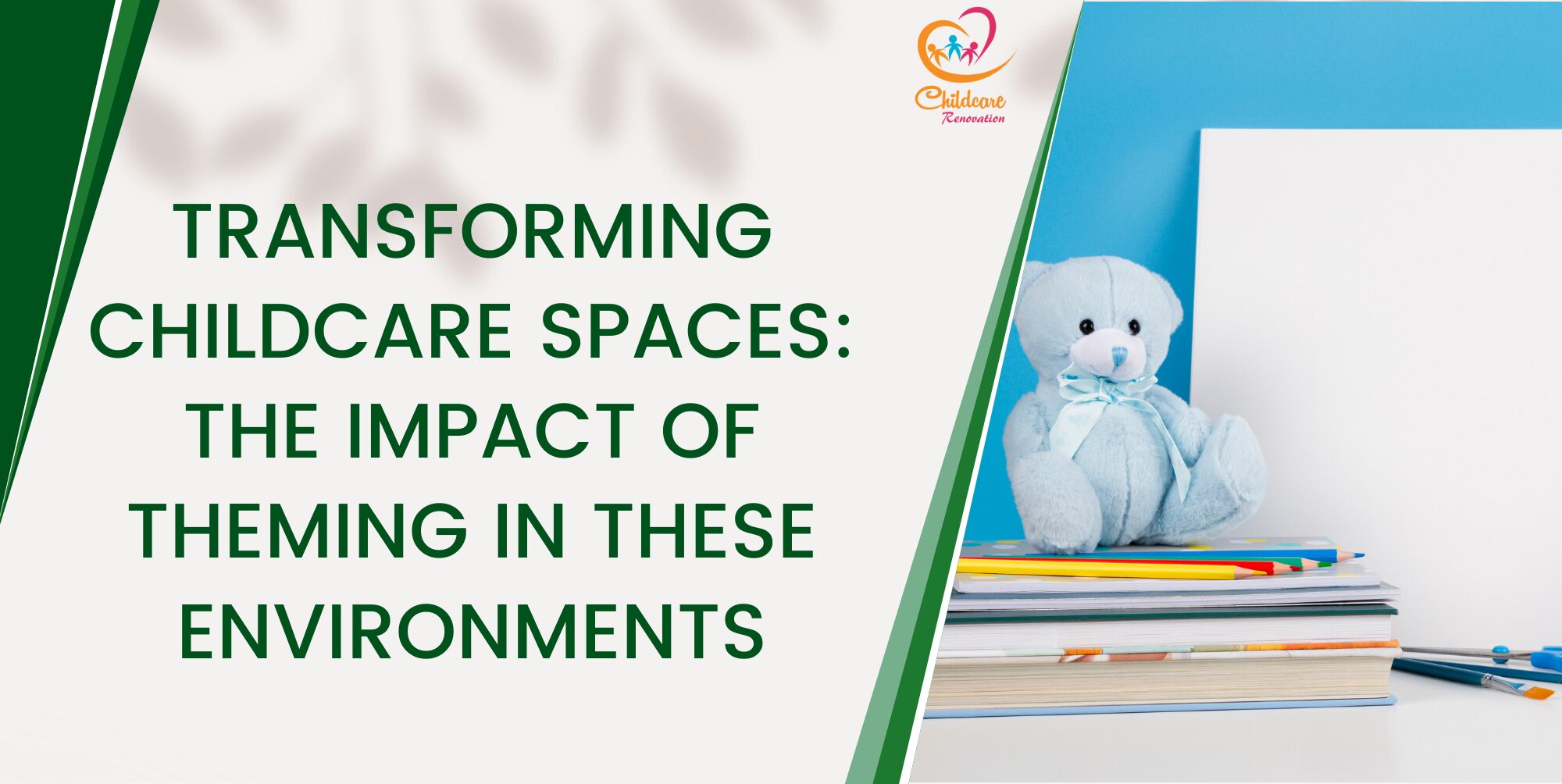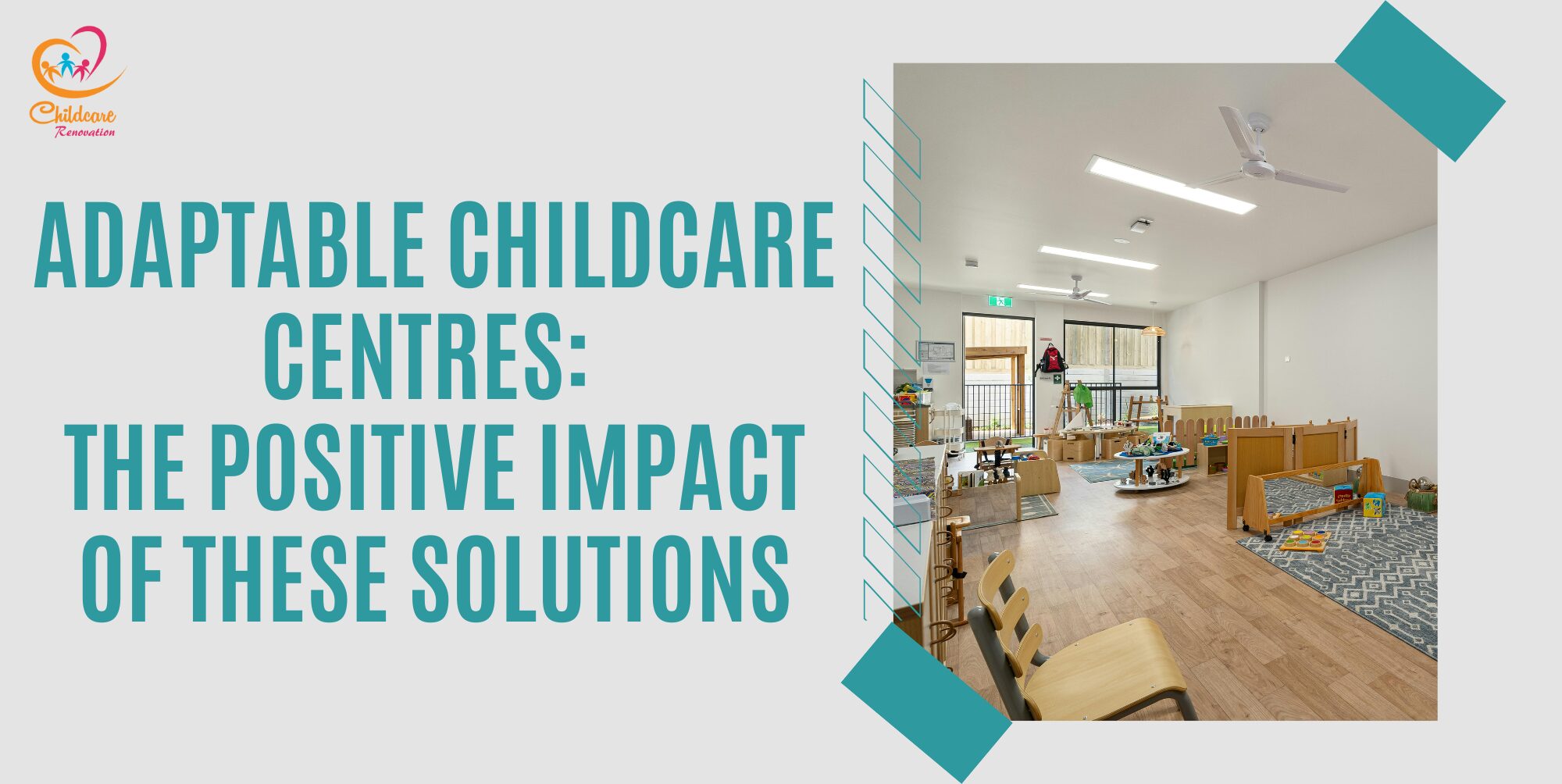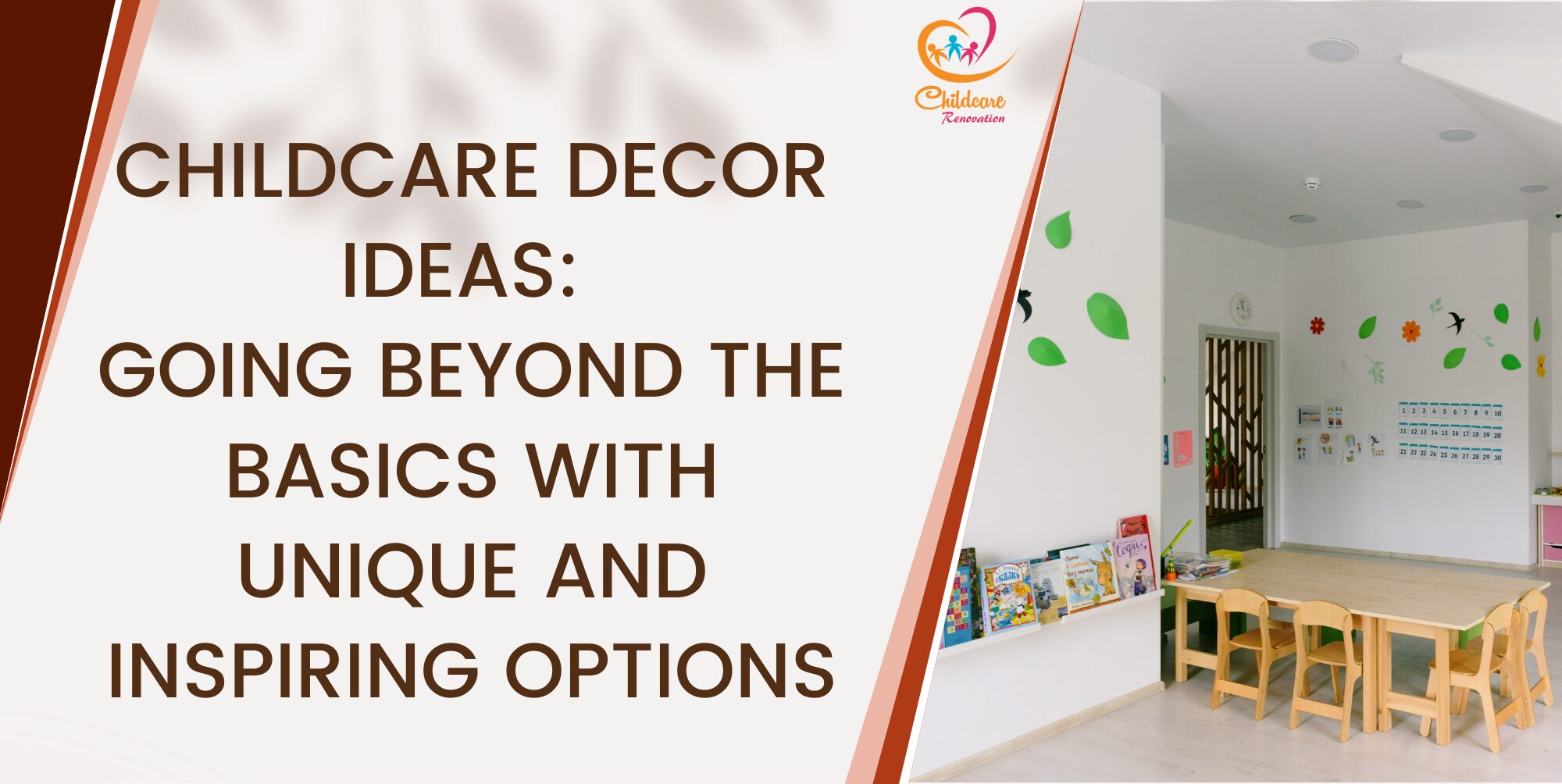Engaging childcare centre decor elements can help to create an establishment that is enriching for young children as well as for the caretakers. Here are 6 of the best pointers for daycare centres.
Engaging Childcare Centre 1: Setting A Theme
A theme can create a bold transformation of a childcare centre into an interactive, imaginative space that introduces creativity and exploration. A chosen theme such as a jungle safari, outer space or under-the-sea offers a cohesive narrative that ties together the decoration and design of the centre. The first thing to take into consideration while creating a theme is to make one selection that interests children and arouses curiosity among them. Use themed elements throughout the setting — murals, wall decals and decorative accents that match the chosen concept. For instance, a jungle-themed space might include rich green walls, animal-shaped furniture and tree structures for climbing or reading.
The topic should then be developed into areas of activity with design flowing from function. In a space-themed hub, the reading area might look like a rocket ship while the creative area uses glow-in-the-dark stars as a theme for various art projects. Sensory walls, themed play structures and creative role-play areas draw the children into the story and foster greater participation.
Furthermore, the employment of themed props and toys enhances the interconnection between the physical environment and the activities provided. Complement the theme with appropriate colour schemes and lighting to evoke the right mood such as soft blues and greens for an ocean theme or bold metallics and purples for a futuristic vibe. A thematic approach not only grabs the attention of children but creates a sense of awe, making the childcare centre an enriching world of learning and play combined.
Engaging Childcare Centre 2: Utilising Creative Elements
Infusing creative and imaginative elements into the décor and design of a childcare facility can create an engaging and stimulating environment that promotes imagination and curiosity. Whimsical murals depicting friendly animals, colourful landscapes or famous storybook scenes can creatively turn blank walls into stimulating canvases and a sense of wonder in children’s minds.
Interactive walls with chalkboards, magnetic surfaces or sensory panels add hands-on dimensions, encouraging exploration and creativity. Display children’s art throughout the centre — it brightens the space and installs ownership into the child’s heart, making the centre feel like their own. Themed areas like a “reading garden” with cosy seating shaped like tree stumps or a “mini city” for role play, immerse children even deeper into fantasy worlds. Incorporating playful lighting fixtures such as star-shaped lights or glowing clouds adds charm and creates a warm ambience.
Soft furnishings such as colourful bean bags, cushions and rugs with creative patterns make the environment appealing to be in while serving practical comfort. Even furniture can become fun such as tables shaped like pieces of a puzzle or storage units that look like a castle. Rotating features like seasonal displays or activity-based exhibits make the experience fresh and new to repeated children. This will help childcare centres lay the foundation for creating a warm and welcoming atmosphere that fosters daily inspiration among children to learn, explore and express themselves.
Engaging Childcare Centre 3: Encourage More Opportunities For Exploration
Encouragement of exploration is one of the most important features of any childcare centre and a well-placed decor and design can do wonders to inspire curiosity and exploration among children. Divide the area into various corners, like art, reading, imaginative play and sensory exploration. Every zone needs to have its distinctiveness that is instantly identifiable either through bright colours, theme decorations or texture to draw a child’s attention.
Open areas with easy access allow children to move freely and get around without hindrance, enabling them to get comfortable and be with their co-children. Interactive walls like the ones made of chalkboards, magnetic boards or even textured surfaces invite creativity and learning through activity. Shelving and bins stocked with books, toys and art supplies thoughtfully placed and easily accessible enable children to make choices independently and explore at will. Incorporating hidden surprises, such as cubbyholes, secret nooks or small tunnels, adds adventure.
@tierraencantada Our toddler rooms are created with little ones in mind- so they can see and explore! 🤩 #toddlerclassroom #daycare #daycareprovider #spanishimmersionprogram
Natural elements, such as potted plants or wood accents might help children connect with nature and, in turn evoke imagination. Visual transitions like colourful rugs or wall decals will help organise how children transition from one activity to the next. Also, place mirrors appropriately so they can serve opportunities for self-discovery and imaginative play. A childcare centre could be a lively environment where children get to explore, learn and grow each day by designing a space that provokes curiosity and invites interaction.
Engaging Childcare Centre 4: Setting Up Outdoor Play Areas
Outdoor playgrounds are particularly vital in any childcare setting because they offer children a chance for physical activities, creativity and social interaction. Thoughtful design ensures these spaces are functional yet captivating. First, incorporate natural elements such as grass, trees and flowers that provide sensory stimulation and a relationship with nature. Playground equipment, including slides, swings and climbing frames should be age-appropriate, colourful and safety-designed. Adding a variety of textures like sandpits, water play stations and rubber flooring enhances tactile exploration and ensures a safe surface for active play.
Encourage creativity with the use of natural material building, outdoor painting or simply playing with roles in a small playhouse. Provide seating for group activities and storytelling with shading via pergolas or colourful canopies to ensure comfort on sunny days. Interact with musical walls or balance beams that will encourage a child’s senses and motor activities.
@wherelearningmeetsplay Full classroom tour: set up for 2020. This was an incredible space and a very successful arrangement. It was simple to set up daily and students found it relatively easy to help with packing up. Yes, I miss pre k😆 This morning as I am creating resources for the term ahead in kindergarten I look back over my camera roll for inspiration. I hope sharing this helps you, wherever you may be. Play based learning need not be complicated and a significant amount of work to undertake. Having a system that works for you and is repeatable- a workable rhythm- is what makes it doable. Happy to talk more about this if needed. Have a lovely Thursday! ❤️Jen #playbasedlearning #learningthroughplay #invitationtoplay #preschool #earlychildhoodeducation #earlyyearsideas #playtolearn #wherelearningmeetsplay #finemotorskills #classroomdecor #classroom #classroomsetup #prek #organisation #teachersoftiktok
Design the space around a theme such as a jungle, fairy garden or pirate ship for an immersive experience. Add in bright murals and decorative pathways along with playful props such as oversized mushrooms or a treasure chest. Use child-friendly fencing for clear boundaries while allowing visibility for caregivers.
Indeed, an appealing playground will not only promote physical well-being but also encourage creativity and teamwork in addition to a sense of adventure. Mixing functionality and design with playfulness allows this area to become a much-needed part of the childcare centre, honing holistic development in a fun yet safe way.
Engaging Childcare Centre 5: Thoughtful Technology Integration
Integration of technology into a childcare centre can make it more dynamic, interactive and a place where children have fun learning and developing their creativity. Interactive tools such as smart-boards and touchscreens, invite hands-on exploration and allow children to learn through play and visual engagement. These may include educational games, drawing applications and age-related storytelling software that will keep children entertained while supporting cognitive development.
Strategically placing technology in designated learning zones ensures a balance where technology complements and doesn’t overshadow traditional play. For instance, a digital storytelling nook with embedded tablets or projectors can make reading sessions a fun adventure. Smart lighting systems can modify the ambience depending on the activities of the day-sleep time can have calming hues while vibrant lights during a play session. Ambient soundscapes or background music systems further enrich the atmosphere, promoting calmness or energy where needed.
For safety and supervision, interactive screens can be mounted at child-friendly heights while being easily monitored by staff. Additionally, technology can support parents through digital check-ins or live camera feeds for real-time updates about their child’s activities. However, there needs to be a balance amidst digital and physical components in the setting so that children continue to receive hands-on tactile and sensory experiences. With thoughtful integration, technology used in decor and design has captivated the minds of young children while building a path toward a safe and controlled technological future for them.
Engaging Childcare Centre 6: Incorporating Child-Centred Furniture
An engaging childcare centre needs child-centred furniture that furthers independence, safety and creativity. Furniture designed at child-friendly heights empowers young children to explore and be comfortable in using their environment. Low tables and chairs, open shelves and independence can make kids able to access materials on their own and have a feeling of ownership and responsibility.
Adding multi-use items such as foldable tables or stackable chairs, enables maximum utilisation of space while simultaneously being flexible for multiple types of activities. Safety first: furniture with rounded edges and soft finishes provides minimal risk of injury in case of play or movement. More than serving the purpose, furniture must be designed to inspire creativity and interaction. For example, modular or animal-shaped and geometric forms can also serve as playing units. Cosy nooks, with bean bags, cushions or soft rugs, provide area cover for reading or quiet time and help children relax.
Storage units can become part of the decor: bins in neat, vibrant colours or shapes will add something to the room. Strong, durable materials that allow for easy cleaning give a guarantee the furniture will remain hygienic and long-lasting, supporting the centre’s needs. If designed with much thought, child-friendly furniture does not only promote safety and comfort but also meets the developmental needs of children by offering them a friendly and provocative environment in which they are gradually nurtured.
Speak with The Experts
Planning to get started at your kindergarten but have no idea about it?
Childcare Center Renovation Singapore is a reliable company for renovation and interior design. They have about ten years of experience in this field and have a good reputation among customers.
Call us now to get your desired kindergarten design ideas now!






